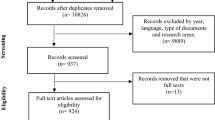Abstract
The aim of this paper is to report new evidence relating to residents’ valuations of aircraft noise in three countries with an emphasis on a comparison of the valuations obtained using two contrasting approaches. One might be regarded as a standard stated choice approach offering pairwise comparisons of two alternatives characterised by a limited number of attributes. The other choice format adopted is innovative in drawing inspiration from the priority evaluator approach to embed aircraft movements alongside a wide range of other local factors that impact on residents’ quality of life. The paper addresses the differences in the results of the two approaches and explores the possible explanations for these variations. Although not conclusive, there is a suspicion that strategic bias may have influenced the results and we urge further research regarding incentives to such bias.
Similar content being viewed by others
References
Adamowicz WL, Boxall PC, Louviere JJ, Swait J (1999) Stated preference methods for valuing environmental amenities. In: Bateman IJ, Willis KG (eds) Valuing environmental preferences: theory and practice of the contingent valuation methods in the US, EU and developing countries. Oxford University Press, chapter 13, pp 460–482
Arentze T, Borgers A, Timmermans H and DelMistro R (2003). Transport stated choice responses: effects of task complexity, presentation format and literacy. Transport Res E 39: 229–244
Arsenio E, Bristow AL and Wardman M (2006). Stated choice valuations of traffic related noise. Transport Res D 11(1): 15–31
Bateman IJ, Langford IH, Munro A, Starmer C and Sugden R (2000). Estimating four Hicksian welfare measures for a public good: a contingent valuation investigation. Land Econ 76(3): 355–373
Bohm P (1971) An approach to the problem of estimating demand for public goods. Swedish J Econ 73(1)
Boyle KJ, Holmes TP, Teisl MF and Roe B (2001). A comparison of conjoint analysis response formats. Am J Agric Econ 83(2): 441–454
Bristow AL and Wardman M (2006a). Valuation of aircraft noise by time of day: a comparison of two approaches. Transport Rev 26(4): 417–433
Bristow AL, Wardman M (2006b) What influences the value of aircraft noise. Paper presented at AET European transport conference, 18th–20th September, Strasbourg
Bristow AL, Wardman M et al (2003) Attitudes towards and values of aircraft annoyance and noise nuisance. Attitudes to Aircraft Annoyance Around Airports (5A) Survey Report. EEC/SEE/2003/002. EUROCONTROL Experimental Centre, France. (published) July 2003). http://www.eurocontrol.int/eec/public/standard_page/eec_2003_all_docs.html
Brown N (1996) Quality of life issues within an integrated transport strategy framework. PhD Thesis, University of Leeds
Caparrós A, Oviedo JL, Campos P (2006) Comparing structural models and welfare measures in ranking and choice experiments. Paper to the 3rd world congress of environmental and resource economists, 3rd–7th July, 2006, Kyoto
Carlsson F, Lampi E and Martinson P (2004). The marginal values of noise disturbance from air traffic: does the time of day matter. Transport Res D 9: 373–385
Carson RT, Groves T, Machina MJ (2000) Incentive and informational properties of preference questions. Draft paper 2000. http://www.econ.ucsd.edu/~rcarson/cgm.pdf
Caussade S, Rizzi LI, Hensher DA and Ortuzar JD (2005). Assessing the influence of design dimensions on stated choice experiment estimates. Transport Res B 39: 621–640
Chapman RG and Staelin R (1982). Exploiting rank-ordered choice set data within the stochastic utility model. J Market Res 19(3): 288–301
Cirillo C, Daly A, Lindveld K (2000) Eliminating bias due to the repeat measurements problem in SP data. In: de Ortúzar JD (ed) Stated preference modelling techniques. PTRC, London
Hague Consulting Group (2000) ALOGIT 4.0EC. The Hague
Heaver C (2002) Attitudes to Aircraft Annoyance Around Airports (5A) Focus Group Report. EEC/ENV/ 2002/009. http://www.eurocontrol.fr/ba_env/Documents/EEC_ENV_2002_009.pdf
Hensher DA, Rose J and Greene WH (2005). The implications on willingness to pay of respondents ignoring specific attributes. Transportation 32: 203–222
Hoinville G (1971). Evaluating community preferences. Environ Plan 3: 33–50
Horowitz JL (1980). The accuracy of the multinomial logit model as an approximation to the multinomial probit model of travel demand. Transport Res 14B: 331–341
MVA (1985) Station modernisation priorities and payoffs. Prepared for British Railways Board
MVA (1986) Evaluation of intercity rolling stock improvements. Prepared for British Railways Board
MVA Consultancy (2004) Attitudes to noise from aviation sources in England: pilot of time-of-day stated preference study and design of standard annoyance questions. Prepared for the Department for Transport, London
Navrud S (2002) The state-of-the-art on economic valuation of noise. Final Report to European Commission DG Environment
Samuelson P (1954). The pure theory of public expenditure. Rev Econ Stat 36(4): 387–389
Timmermans H (1993). The impact of task complexity on information in multi-attribute decision making. J Behav Decision Making 6: 95–111
Thune-Larsen H (1995) Flystøyavgifter basert på betalingsvillighet, TOI report 289/1995. (English language summary report: Charges on air traffic noise by means of conjoint analysis)
Tversky A and Kahneman D (1991). Loss aversion in riskless choice: a reference dependent model. Quart J Econ 106(4): 1039–1061
Wardman M and Bristow AL (2004). Noise and air quality valuations: evidence from stated preference residential choice models. Transport Res D 9(1): 1–27
Wardman M, Shires J (2003) Review of fare elasticities in Great Britain. Working Paper 573. Institute for Transport Studies, University of Leeds
Wardman M and Whelan G (2001). Valuation of improved railway rolling stock: a review of the literature and new evidence. Transport Rev 21(4): 415–448
Wardman M, Bristow A, Murphy P, Heaver C (2003) Valuation of aircraft noise using stated preference methods within a broader quality of life dimension. Paper presented at AET European Transport Conference. 8th–10th October, Strasbourg
Widlert S (1998) Stated preference studies: the design affects the results. In: de Ortuzar JD, Hensher D, Jara-Diaz S (eds) Travel behavior research: updating the state of play. Pergamon, UK, chapter 7, pp 105–123
Author information
Authors and Affiliations
Corresponding author
Rights and permissions
About this article
Cite this article
Wardman, M., Bristow, A. Valuations of aircraft noise: experiments in stated preference. Environ Resource Econ 39, 459–480 (2008). https://doi.org/10.1007/s10640-007-9136-1
Received:
Accepted:
Published:
Issue Date:
DOI: https://doi.org/10.1007/s10640-007-9136-1




